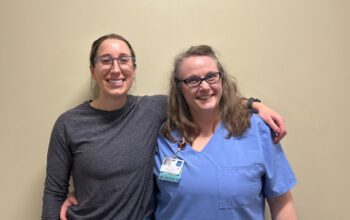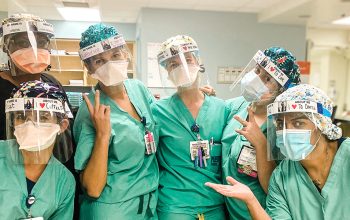Innovations in technology — with clinician input and collaboration — are improving efficiencies for care teams and beyond.
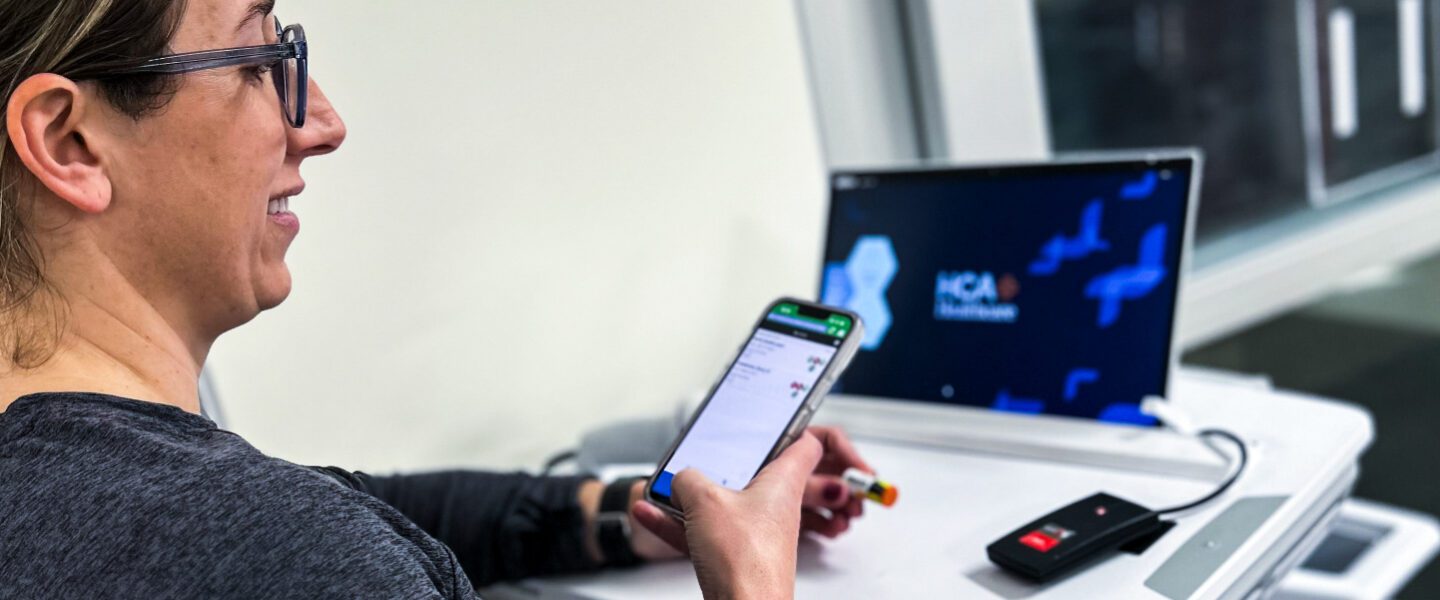
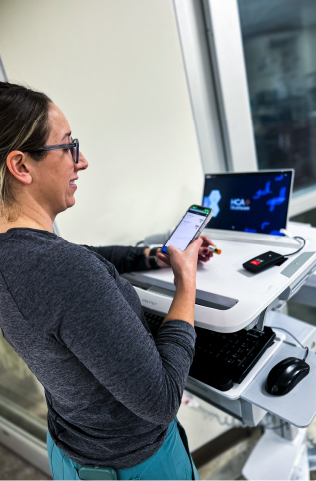
Two important practices that successful organizations can engage in include elevating the voices of colleagues by involving them in developing solutions designed to solve problems preventing them from performing their best and providing them the resources and information needed to excel at their jobs. That’s especially true in medicine.
To achieve those dual objectives, HCA Healthcare is committing to a number of new technologies, including advanced documentation platforms, cloud storage and generative artificial intelligence (AI). The oversight of those responsibilities falls to Michael Schlosser, MD, MBA, FAANS, HCA Healthcare’s senior vice president of Care Transformation and Innovation (CT&I). Even the name of Dr. Schlosser’s department, which was first established in 2021, was chosen with keen intent.
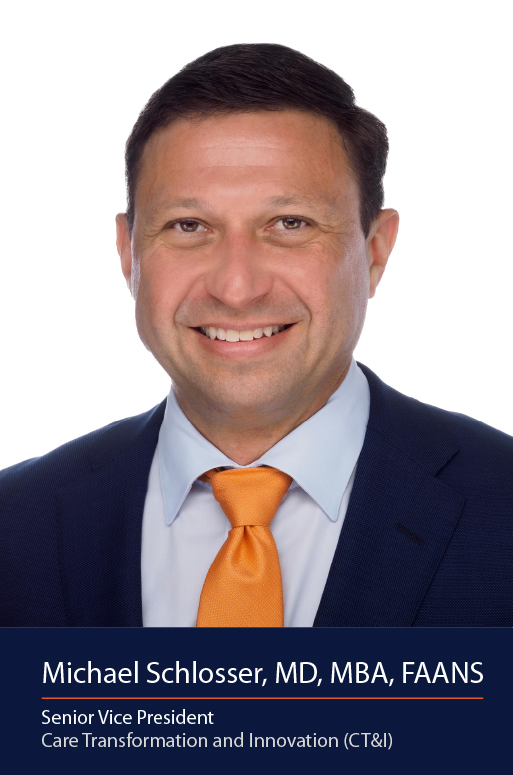
A winning strategy for all
There are several factors behind the need for innovation, with documentation demands and staffing challenges headlining the list. CT&I represents an amazing opportunity to create a win for our patients, for the organization and for our most-valued resources — our nurses and doctors. In many instances, leveraging rapidly accelerating technologies like AI and machine learning can help ensure quality care.
“We’re creating efficiencies that are actually going to improve the quality of the data, because we’re removing the manual variation that occurs when we ask individual caregivers to do this work,” says Dr. Schlosser. “We want to explore how these technologies can remove some of this burden and return care team members to the bedside, where they can focus on what patients need, which is ultimately their passion.
“So everyone wins. The care teams can focus on patients. The organization has better data, and the patients have more time and access to their care team.”
We’re trying to build a system that delivers care in a highly efficient, highly effective and more joyful way. That’s really where the term ‘care transformation’ came from.— Michael Schlosser, MD, MBA, FAANS, HCA Healthcare’s senior vice president of Care Transformation and Innovation (CT&I)
Staying ahead of the curve
Dr. Schlosser also notes that time is critical, and HCA Healthcare must be nimble to stay ahead of a steep technology curve.
“We’re going to have to be rapidly testing and innovating and trying things out before we land on the ultimate solutions that really meet the needs of everyone involved — that will be transformative for the organization,” he says.
Dr. Schlosser notes that there can often be resistance to change because people’s lives are at stake.
“If you have a path that you’ve always followed, that you’re comfortable with, and that you think is safe and effective, it takes a lot of energy and a lot of really good reasons to deviate from that path,” he says. “It has been one of our challenges, where we really had to push teams to be willing to test ideas and learn from them.”
To accomplish that goal, HCA Healthcare has established Innovation Hubs at UCF Lake Nona Hospital in Orlando, Florida, and TriStar Hendersonville Medical Center in Hendersonville, Tennessee.
“These are our laboratories where real-life doctors and nurses who care for patients every day also get to talk directly to data scientists and technologists and folks from big software companies like Palantir,” says Dr. Schlosser. “They get to tell them exactly what it is that they think the solution should do and why, and then we work with them to craft that into something that will deliver value for the organization and for them.”
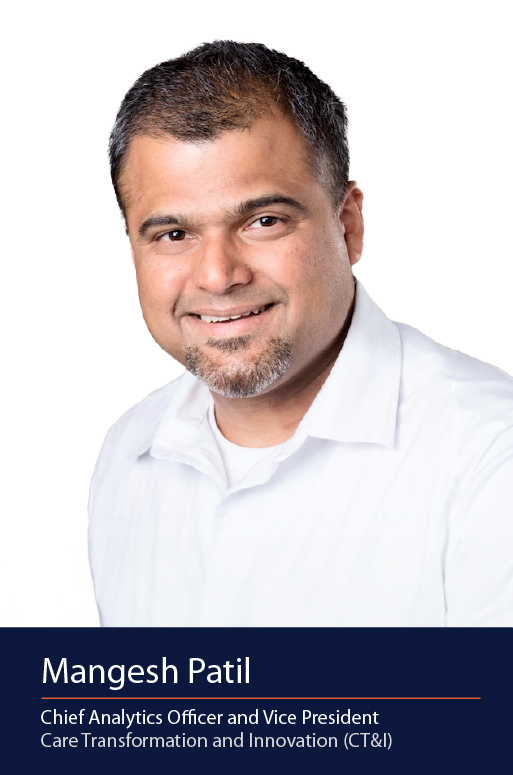
Improving healthcare with AI
During its first 30 months, the CT&I department focused on building capabilities. That involved asking questions about leveraging an Innovation Hub, incorporating change management teams and operational integration, and introducing and testing technology in hospitals without causing disruptions.
The last six months of 2023 were highlighted by an emerging partnership with tech giant Google Cloud.
“We’re really aligned on some key items, like how to deploy these really advanced artificial intelligence capabilities, which we call generative AI, to solve administrative burden problems,” he says. “Google has shown up in a very powerful way for us. They brought some of the best researchers, the best minds, to work elbow to elbow with our teams.”
One of the most promising developments, says Mangesh Patil, vice president, chief analytics officer for HCA Healthcare and CT&I, is a nurse handoff tool, which uses AI to assess electronic health records and select key data for upcoming shifts.
“It’s just a small tool, something that’s going to help our nurses be more efficient in communicating the conditions about the patient to the team that they then hand off to when their shift is over,” says Mangesh.
Just as important is that the handoff tool is a reproducible technology, says Dr. Schlosser. “If we can build it to do that kind of task, and we are, we can use it again and again for all kinds of different things to help our nurses out.”
“We have a very ambitious goal that AI could be your partner in the care team, a steward of all the useful information that we put in EHR (electronic health records),” he says. “There could be an AI entity that could help you navigate all of that.”
At the end of the day, the decision needs to be in the favor of the patient. Every single person on our team is motivated by the impact that they’re creating.— Mangesh Patil, HCA Healthcare’s chief analytics officer and vice president of Care Transformation and Innovation (CT&I)
Dr. Schlosser also points to Timpani, HCA Healthcare’s transformational scheduling and staffing solution, which was so successful in nine hospitals that plans are set to add it to another 80 hospitals in the first half of 2024.
“We’re going to have our first truly digital artificial intelligence-driven solution that’s driving a meaningful amount of hospital operations — in this case our labor management — out in the real world,” he says. “AI gets better the more people use it, so I’m very excited about us getting this in the hands of a lot more people.”
The same holds for an AI-driven documentation solution, which is being developed in partnership with Augmedix, that’s been launched in four HCA Healthcare hospitals.
“We’ve got plans in action already to spread the number of users of that technology,” says Dr. Schlosser. “Those will be big milestones for CT&I, to get out of the laboratory and the alpha and beta phase and into more people in the real world having access to our tools.”
Generative AI is also expected to play an even larger role in the immediate future. Unlike many fields, where AI is treated as a solution in search of a problem, that healthcare is the opposite, Mangesh explains.
“In healthcare, we have had these challenges that we haven’t been able to solve just with the use of digital technologies,” he says. “But now, with these new capabilities in AI, we are actually seeing a glimpse of the ability to solve those problems.”
According to Dr. Schlosser, HCA Healthcare is one of the few healthcare enterprises that has the ability to invest in promoting this evolving technology.
“Because of our size and our scale, and obviously our success and capabilities, we have the ability to make these kinds of investments and to think long-term,” says Dr. Schlosser.
The pandemic made HCA Healthcare leaders realize there were mounting challenges that weren’t being met by existing technologies.
“[HCA Healthcare founder] Dr. Frist always used to say, ‘If we change healthcare inside HCA Healthcare, you change it across all of healthcare,’” says Dr. Schlosser. “We had the opportunity to demonstrate that yet again with our technology and AI agenda.”
Every single person on our team is motivated by the impact that they’re creating. And they directly get to see that when they visit our hospitals.— Mangesh Patil, chief analytics officer, Care Transformation and Innovation, HCA Healthcare
The Customer Connection Effect
Mangesh Patil, chief analytics officer for HCA Healthcare’s Care Transformation and Innovation department, believes there’s a great deal that the healthcare field can learn from other non-clinical industries, where the key to success is keeping customers happy. And Mangesh would know, having joined HCA Healthcare last year after a decade with a world-renowned multinational mass media and entertainment company.
Mangesh led artificial intelligence solutions along with underlying data science and engineering platforms. Under his leadership, his technology team reimagined a broad range of guest experiences using AI-first product design. That experience, he says, is very relatable to the business of healthcare.
“Hospital systems and theme parks or any of these large destination systems, they’re heavy-operating-cost businesses,” says Mangesh. “To be able to provide a better service, the business has to be optimized.”
Whether building an operating system for entertainment or for HCA Healthcare, Mangesh knows the priority is enabling colleagues to do their craft well by spending more time with patients or guests. That fundamental philosophy is the same.
“The smarter you get about predicting what to expect, the better you can get at delivering a better service using large volumes of data,” he says.
However, a hospital setting is more multifaceted. At other large service-based entities like resorts and cruise lines, there’s a very clear understanding of who the customer is, because the customer is also the payer.
“But in hospital settings, it’s a [slightly] more complex ecosystem,” Mangesh says. “The payers are different from the actual receivers of the care. There are also the doctors, the physicians, who tend to be customers as well.”
Regardless of unique differences, the guest-centric opportunities within product design remain the same.
“It doesn’t matter what departments are there or what systems we use — at the end of the day, the decision needs to be in the favor of the patient,” says Mangesh. Every single person on our team is motivated by the impact that they’re creating. And they directly get to see that when they visit our hospitals.”
